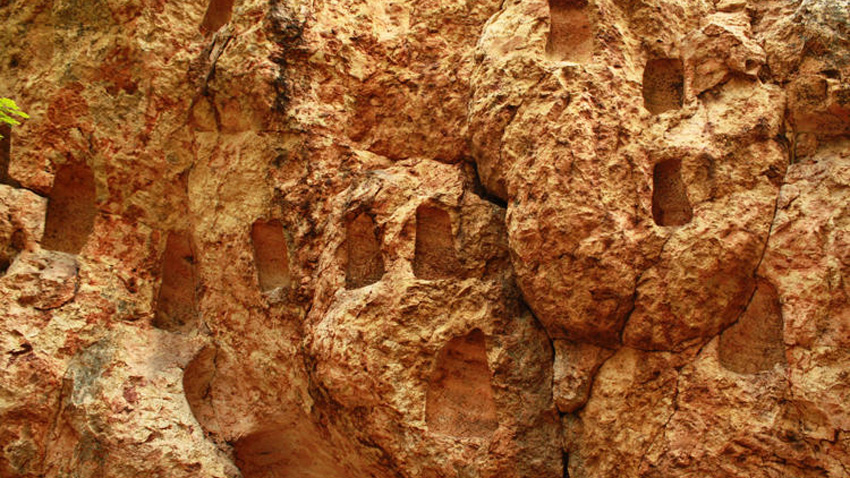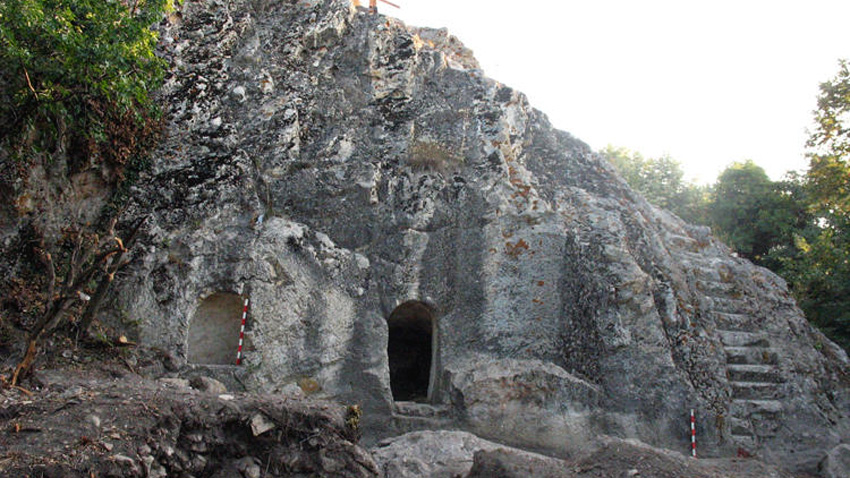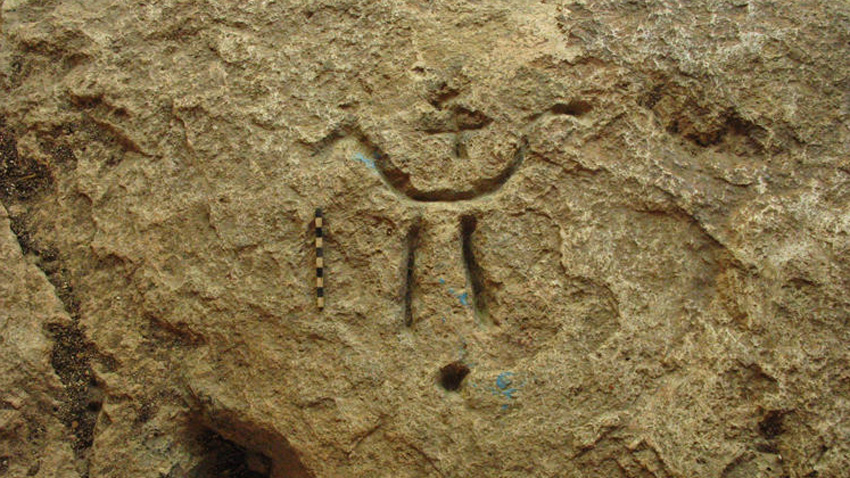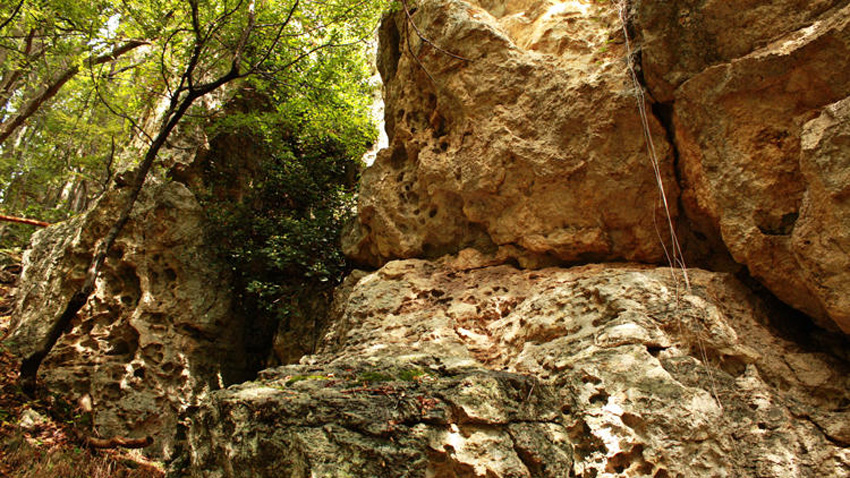The impressive ancient complex of Gluhite Kamani /Deaf Stones/ next to the Malko Gradishte village, Lyubimets Municipality in the Northeast Rhodope Mountain was first discovered by Czech brothers Hermann and Karel Škorpil in the early 20th century. The brothers were the founders of scientific archaeology in Bulgaria. However, the revealing of the sites’ secrets began no earlier than 2008, says Associate Prof. Georgi Nehrizov, a long-year researcher of the complex.
“The site is huge, spreading over 1 km2 and including the Sveta Marina Peak where the medieval Efrem fortress was supposedly situated. There is a bunch of rocks on the eastern slope of the peak, known by the name Deaf Stones,” Associate Prof. Nehrizov says.
 More from him on the area’s name:
More from him on the area’s name:
“We have always been impressed by the lack of audibility there – the rocks simply absorb the noise, there is no echo as well. We have had several experiments this year together with experts from the Institute of Mechanics of Acoustics and they confirmed our observations. Even a gunshot there fades at 50 – 60 m. We expect to find out why.”
 The complex is astonishing with its numerous rock niches:
The complex is astonishing with its numerous rock niches:
“These are monuments, spread mainly across the East Rhodope along the Arda riverbank and related to the culture of Thracian people. That was confirmed by archaeological excavations. However, we reached a layer from the end of the 5th and the beginning of the 4th millennium BC. These are the earliest traces of human presence there. We are not sure what the place was functioning like back then, as few artifacts have been discovered, mainly ceramics and primitive stone tools. The Bronze Age is not represented, but the site’s intense exploitation started as of the Early Iron Age. Cultural layers, thick over 2.5 m provide really detailed information, revealing lots of facilities, related to rituals and cult practices.”
 The Deaf Stones once again show how ancient Thracians tries always to select high spots for their rituals:
The Deaf Stones once again show how ancient Thracians tries always to select high spots for their rituals:
“There are over 500 niches carved into the rocks – this is the biggest group of rock niches in the Rhodope, discovered so far. Their purpose was doubtlessly ritualistic. The fireplaces left also testify on rites and mysteries, related to fire.”
The rock entrances lead towards small chambers with rounded floors, where urns could be placed. That makes scientists think that those were burial facilities. One of the first discoveries of Associate Prof. Nehrizov was a hard-to-be-dated petroglyph.
“It is really hard to date something, carved in a wall. We believe it is a solar sign – the sun boat which traces its route across the skies…”
 2016 was particularly successful for the Deaf Stones’ researchers:
2016 was particularly successful for the Deaf Stones’ researchers:
“The large group of anthropomorphic and zoomorphic ceramic figures, discovered around a fireplace has been the most interesting thing so far. Those are very rough, but really expressive: male and female figures with distinguishing gender marks and also animals which are hardly recognizable. Similar findings are typical for Thracian sites, but this time their quantity is unique.”
Archaeologists say the figures were gifts for fire rituals and perhaps those were even produced on the spot.
The research shows that the complex functioned till the end of the 12th c. “The coins and ceramics found suddenly end up by the end of the 12th c. We relate this to a writing of a chronicler of the Fourth Crusade Geoffrey of Villehardouin who mentioned that the Efrem fortress was conquered by the crusaders. Perhaps that was the moment when the Deaf Stones complex was destroyed,” Associate Prof. Hristozov says in conclusion.
English version: Zhivko Stanchev
Photo: library
In 2024, the National History Museum sent expeditions to 22 archaeological sites. More than 1,400 artifacts were found during the season spanning the period from prehistoric times down to the Middle Ages. The most significant of these discoveries are..
From 31 January 2025, the first podcast about Bulgarian Orthodox communities abroad - Bridge of Faith - will be launched. The concept is the brainchild of the team of the Bulgarian National Radio's (BNR) overseas programme - Radio Bulgaria, and is being..
It is 131 years since the birth of Tsar Boris III, dubbed unifier. Boris Saxe-Coburg-Gotha found himself at the head of Bulgaria after the abdication of Tsar Ferdinand after the defeat of the country in World War I. The young monarch was crowned..
Meatfare Sunday in 2025 will be remembered as a major celebration for the Bulgarian Orthodox Church and the entire Bulgarian community in the United..
After nearly 35 years, the Bulgarian Orthodox Church Community in London has its own church in the central part of the British capital, in close proximity..

+359 2 9336 661
